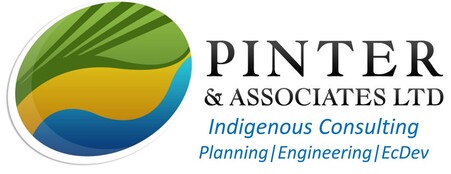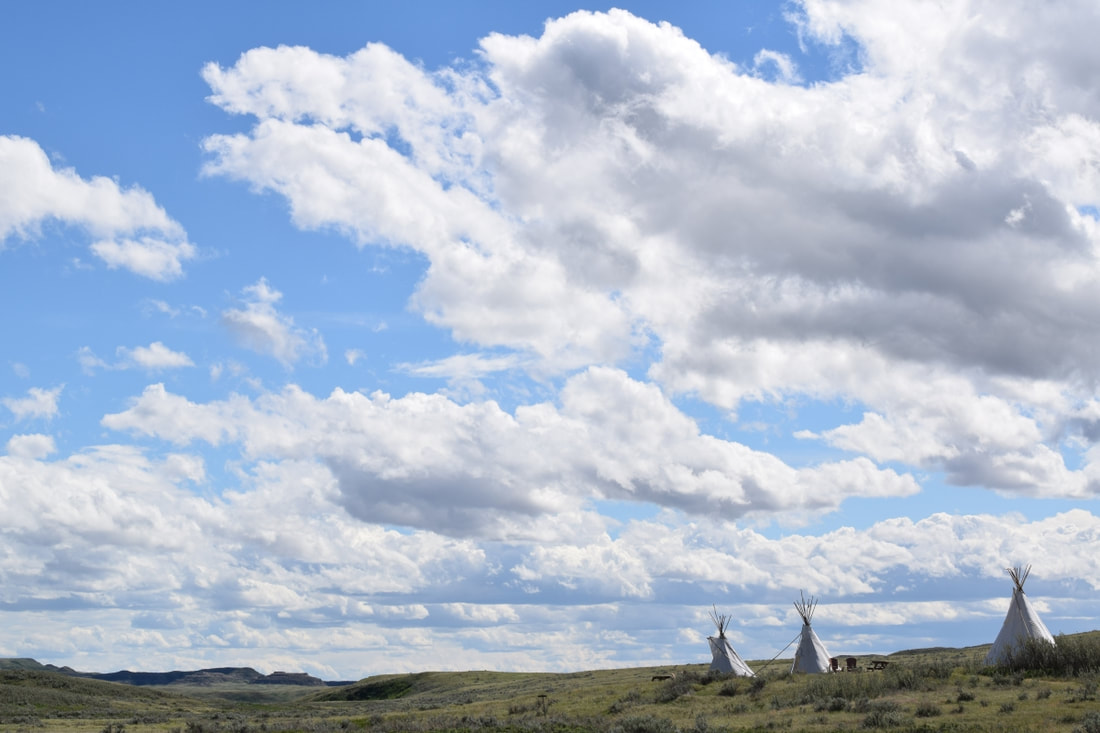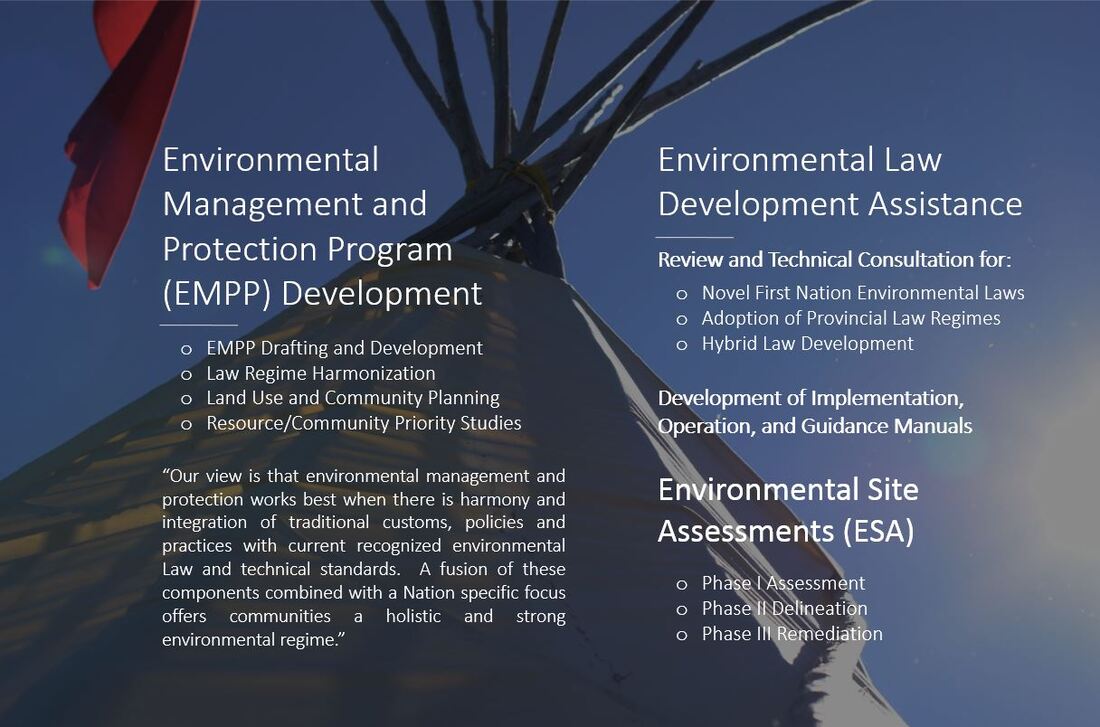Indigenous Consulting

PINTER & Associates Ltd (PINTER) has over twenty-four (24) years of experience working with Indigenous groups, First Nations, and in northern communities throughout Saskatchewan and Western Canada on environmental, municipal, waste management, and geotechnical engineering, community and economic development, planning, and safety related projects. We provide engineering consulting services to First Nations Communities, Tribal Councils, and member communities, Business Development Corporations, and Indigenous Owned Enterprise. PINTER's experience extends to development and management of First Nations safety programs and projects and in particular Emergency Response Plans for First Nations fuel stations.
|
Services Offered by PINTER
|
We were honored in 2015 to receive National and Provincial consulting engineering awards for our work with communities through the FNLM process.
We take pride in working with First Nation communities to find solutions that enhance Reserve lands, protect the environment, build internal capacity, promote economic development opportunities and allow Nations to exercise their inherent sovereignty.
First Nation Land Management
PINTER specializes in working with First Nations signed onto the Framework Agreement and Operational Nations under the First Nation Land Management (FNLM) process. PINTER has specific experience in the development of FNLM policy, Environmental Management and Protection Programs, and providing technical assistance for development of First Nation Environmental Laws.
We take pride in working with First Nation communities to find solutions that enhance Reserve lands, protect the environment, build internal capacity, promote economic development opportunities and allow Nations to exercise their inherent sovereignty.
First Nation Land Management
PINTER specializes in working with First Nations signed onto the Framework Agreement and Operational Nations under the First Nation Land Management (FNLM) process. PINTER has specific experience in the development of FNLM policy, Environmental Management and Protection Programs, and providing technical assistance for development of First Nation Environmental Laws.
For more information, contact us.
Frequently Asked Questions
1. What is the First Nation Land Management (FNLM) process and how does it relate to First Nation Land Management?
The FNLM operates under the Framework Agreement on First Nation Land Management, which was ratified by Canada in 1999. The main goals of the FNLM are to facilitate the creation of a streamlined and enhanced economic development climate on Reserve lands while maintaining a high level of environmental protection and stewardship. Under the FNLM, member Nations, opt out of the 34 land provisions of the Indian Act, and under Nation specific Land Codes are able to manage, protect and exercise their inherent sovereignty over their lands and natural resources.
2. What is an Environmental Site Assessment (ESA) and why do they need to be completed on First Nation Lands?
An Environmental Site Assessment is a process undertaken by qualified individuals to determine potential (or actual) presence and concentration of hazardous contaminants at a chosen site location or property on or in the land, water or air. There are three stages of ESA that are typically undertaken:
3. What are typical areas of concern that are inspected and assessed during Reserve Wide Phase I ESA? And what types of contaminants are present at these locations?
Typical areas of concern that may contain contaminants or may be contaminating the surrounding land include:
4. What is the purpose and the components of an Environmental Management Plan (EMP) and an Environmental Law Framework under the FNLM?
An EMPP is a comprehensive framework that combines existing and new environmental policy, community development and land use plans, bylaws and traditional practices and teachings to ensure the protection of people, land and resources. The EMPP contains associated guidance documents, which together with the plan and the enacted Environmental Law framework, provide direction for a First Nation, the community at large, interested businesses and outside governments regarding:
5. What are First Nation Land Use Plans and Community Environmental Sustainability Plans (CESP) and how do they benefit a community? Is there funding available for development of these plans?
A Land Use Plan or Community Development Plan is meant to provide guidance and direction for a community to best manage challenges of growth and development on Reserve lands. A Land Use Plan may address several areas including:
A Community Environmental Sustainability Plan (CESP) is a document that outlines a systematic approach regarding environmental issues of concern that may affect Reserve lands and how to identify and resolve these environmental issues. A CESP helps First Nations to manage their environmental responsibilities, lessen the impact of current issues and helps in the strategic planning process to best protect people, lands and resources.
The FNLM operates under the Framework Agreement on First Nation Land Management, which was ratified by Canada in 1999. The main goals of the FNLM are to facilitate the creation of a streamlined and enhanced economic development climate on Reserve lands while maintaining a high level of environmental protection and stewardship. Under the FNLM, member Nations, opt out of the 34 land provisions of the Indian Act, and under Nation specific Land Codes are able to manage, protect and exercise their inherent sovereignty over their lands and natural resources.
2. What is an Environmental Site Assessment (ESA) and why do they need to be completed on First Nation Lands?
An Environmental Site Assessment is a process undertaken by qualified individuals to determine potential (or actual) presence and concentration of hazardous contaminants at a chosen site location or property on or in the land, water or air. There are three stages of ESA that are typically undertaken:
- Phase I ESA - Initial site assessment including record review, site visit, interviews and evaluation of information/reporting.
- Phase II ESA - Physical site assessment and delineation including collection of soil and/or water samples by test holes/pits and/or groundwater monitoring wells.
- Phase III ESA - Remediation of impacted sites/locations through in-situ (performed using and simulating the natural processes in the soil in place) or ex-situ (removal of materials from the site and replacement with clean materials) remediation. Long term monitoring of the site may also be required.
3. What are typical areas of concern that are inspected and assessed during Reserve Wide Phase I ESA? And what types of contaminants are present at these locations?
Typical areas of concern that may contain contaminants or may be contaminating the surrounding land include:
- Animal Husbandry Operations (cattle, bison or horse corrals)
- Fuel Storage Tanks and/or Spills (gasoline, diesel or oil)
- Lagoons
- Septic Tanks
- Vehicle Salvage Yards (fuel, hydraulic fluid, engine oil, anti-freeze, batteries)
- Bluestone/fencepost treating Pits (Copper Sulphate)
- Agricultural Chemical Storage or Chemical Container Dumpsites
- Community Dumpsites/Landfills
- Household Dumpsites
- Copper Wire Burn Sites (Dioxins and Furans)
4. What is the purpose and the components of an Environmental Management Plan (EMP) and an Environmental Law Framework under the FNLM?
An EMPP is a comprehensive framework that combines existing and new environmental policy, community development and land use plans, bylaws and traditional practices and teachings to ensure the protection of people, land and resources. The EMPP contains associated guidance documents, which together with the plan and the enacted Environmental Law framework, provide direction for a First Nation, the community at large, interested businesses and outside governments regarding:
- Application and enforcement of First Nation owned Environmental Laws and Regulations that apply on Reserve under the FNLM.
- Operational guidance and management of the Nation's environmental protection framework.
- Guidance for Environmental Assessment and Economic Development on Reserve lands.
- Framework for development and implementation of policies, site assessment and monitoring procedures and educational initiatives for the community and businesses.
5. What are First Nation Land Use Plans and Community Environmental Sustainability Plans (CESP) and how do they benefit a community? Is there funding available for development of these plans?
A Land Use Plan or Community Development Plan is meant to provide guidance and direction for a community to best manage challenges of growth and development on Reserve lands. A Land Use Plan may address several areas including:
- Compatibility of land uses and land use types
- Zoning and community development
- Population projections and required community servies
- Housing
- Infrastructure needs (water, sewer, power, energy and drainage)
- Traffic (vehicular and pedestrian)
- Economic Development (Commercial and Industrial Land Use)
- Environmental and Cultural Preservation and Protection
A Community Environmental Sustainability Plan (CESP) is a document that outlines a systematic approach regarding environmental issues of concern that may affect Reserve lands and how to identify and resolve these environmental issues. A CESP helps First Nations to manage their environmental responsibilities, lessen the impact of current issues and helps in the strategic planning process to best protect people, lands and resources.



